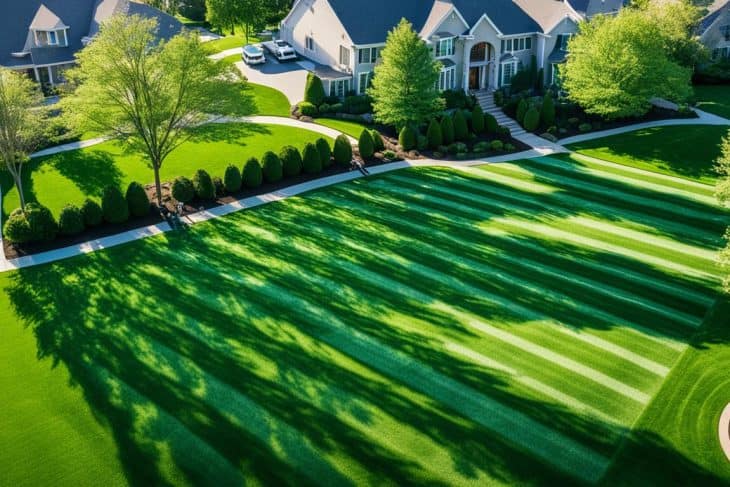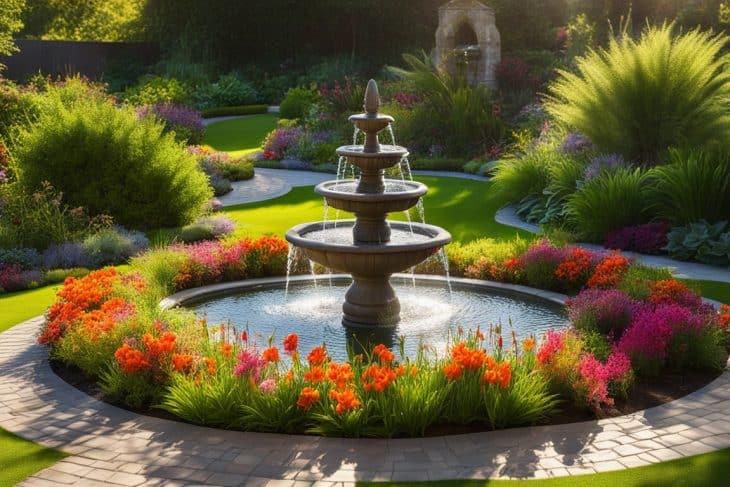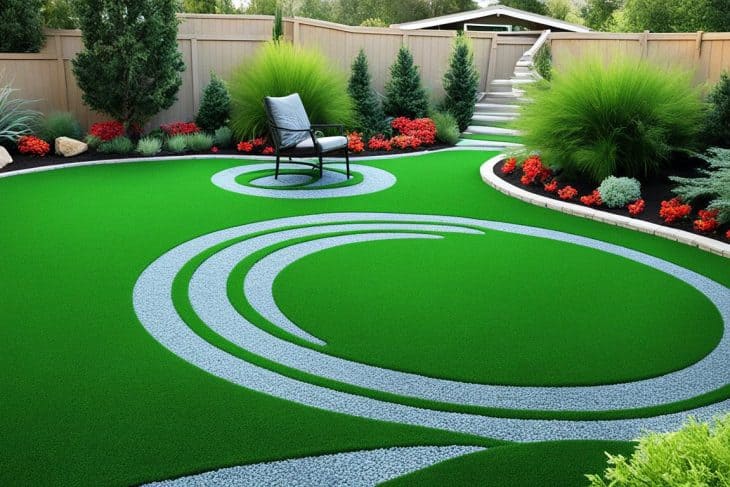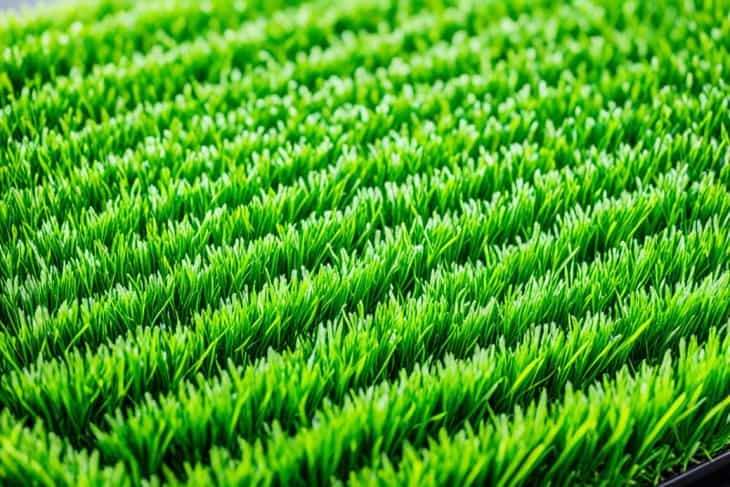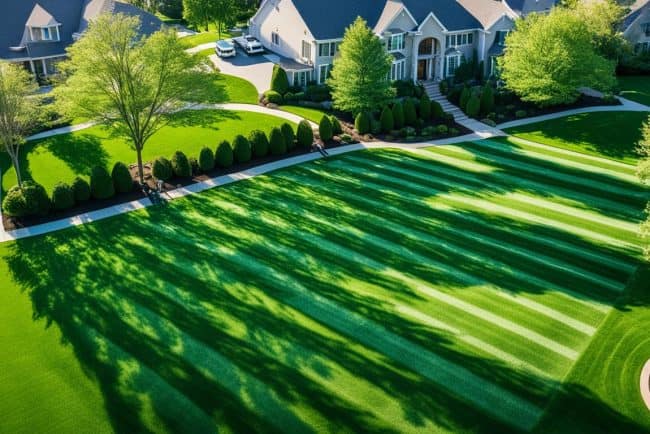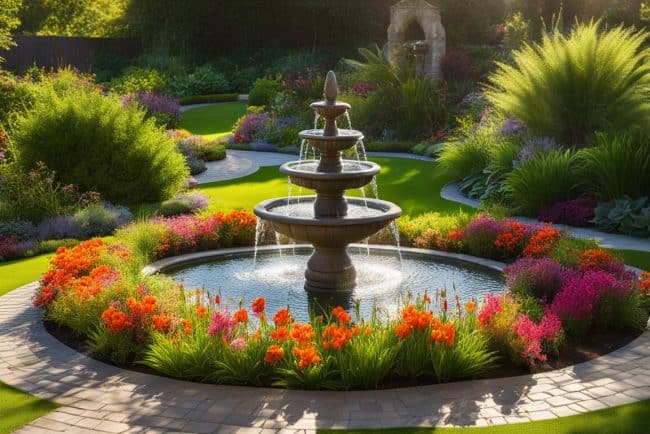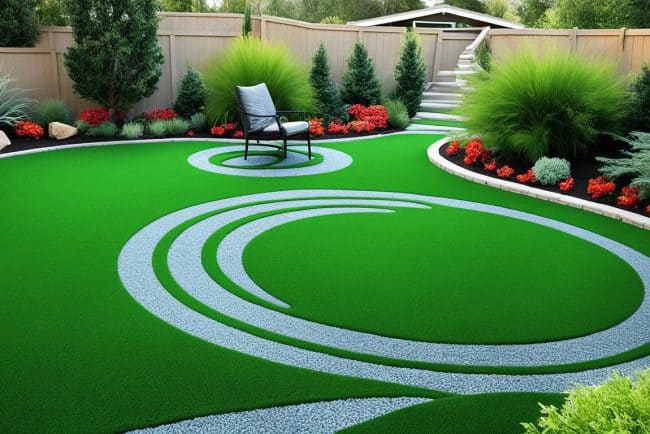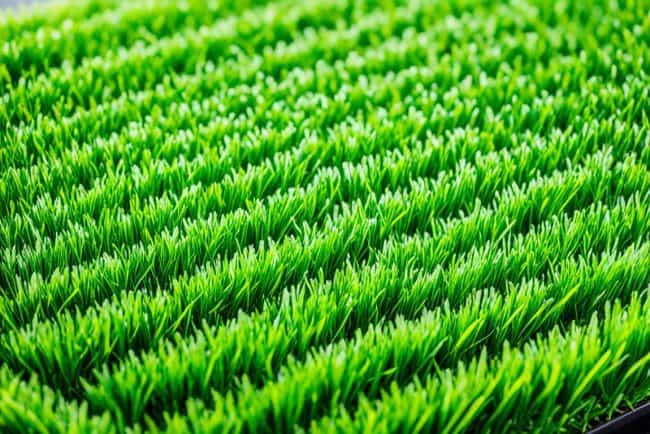When I first got my artificial grass, I felt relieved. No more mowing, watering, or fighting weeds seemed like a dream. But soon, I realized that taking care of it wasn’t easy. I saw debris and faded spots where my kids played a lot.
This made me start looking for the best ways to keep my synthetic turf looking great. I learned that with the right care, my lawn could last 15 to 25 years. But, it was important to know how to take care of it to make it last.

This guide shares what I’ve learned. It helps you enjoy your artificial lawn without the usual problems.
Key Takeaways
- Maintaining synthetic grass saves both time and money compared to natural grass care.
- With proper upkeep, synthetic lawns can last between 15 to 25 years.
- Regular rinsing helps eliminate dust, dirt, and pet odors.
- Utilizing the right tools is essential for effective maintenance.
- Artificial grass is weed-resistant but benefits from pre-emergent weed control.
- Monthly maintenance includes removing debris to keep the lawn clean and attractive.
Understanding the Unique Needs of Artificial Grass
Artificial grass care might seem easy, but it has its own set of needs. Homeowners need to know these requirements to keep their grass looking great and working well. It’s key to understand how to take care of synthetic grass for the best lawn health.
Why Artificial Grass Requires Care
Artificial grass can last 15 to 25 years with proper care. Its lifespan depends on regular upkeep, like removing debris, rinsing, and cross-brushing. Unlike real grass, it doesn’t get weeds, diseases, or fungi. But, it can get worn down in busy spots and collect dirt and smells from pet waste. It’s important to deal with these issues quickly to keep it looking good.
Common Misconceptions About Maintenance
Many think artificial grass needs no upkeep after it’s put in. This belief can lead to bad smells, visible dirt, and uneven wear. Another wrong idea is that you never have to clean it. But, rinsing and spot cleaning are key to preventing damage and keeping the turf looking nice. Knowing these myths helps set the right expectations for caring for artificial grass and shows why regular care is important.

Routine Maintenance for a Pristine Lawn
Keeping artificial grass looking great needs regular care. It’s important to remove debris and clean spots often. Doing these things well keeps your lawn looking good.
Regular Removal of Organic Debris
Removing leaves and twigs from your lawn is key. These things can block water flow and grow bacteria. Use a leaf blower, broom, or rake weekly to keep your lawn clean.
After storms or strong winds, clean up quickly. This stops debris from getting stuck in the grass.
Importance of Spot Cleaning
Cleaning spots on your lawn is also crucial. Spills from drinks or pet accidents can stain if not cleaned right away. Blot spills and use a mild detergent and water to clean them.
This keeps your lawn looking good and working well. It also stops stains from setting in, keeping your grass looking nice.

Caring for Artificial Grass: Essential Cleaning Practices
Keeping up with a cleaning schedule is key for great artificial grass care. Daily and weekly cleaning keeps synthetic turf looking good and safe. I make sure to clear out visible debris every day, especially after pets or parties. This quick step keeps smells down and the area nice.
Daily and Weekly Cleaning Tips
For weekly care, I suggest using a leaf blower to get rid of debris and pet waste. This easy step stops dirt and waste from getting into the grass, which can cause color loss and damage. A monthly rinse with a garden hose removes dust, pollen, and other pollutants. Brushing the grass keeps fibers upright. Regular care stops mold and mildew from growing, making it safe for family fun.
Effective Techniques for Stain Removal
Knowing how to remove stains is important for keeping synthetic turf in top shape. For small stains, a mix of water and mild detergent works great. For tough stains like oil or grease, a solution of ammonia and water is usually effective. If you have tree sap or chewing gum, dry ice or aerosol refrigerant can help remove it. Quickly dealing with stains keeps the artificial grass looking great.

The Best Tools for Maintaining Artificial Grass
Keeping artificial grass looking great needs the right tools. These tools make upkeep easy. Each tool has a special job, making maintenance simple for homeowners like me.
Must-Have Equipment for Homeowners
For a beautiful artificial lawn, some tools are essential. These tools cover different maintenance tasks:
| Tool | Purpose | Tool Usage Tips |
|---|---|---|
| Garden Hose | For rinsing and dust removal | Use weekly to keep surfaces clean. |
| Leaf Blower | For removing leaves and debris | Utilize regularly to maintain hygiene and prevent weed growth. |
| Synthetic Bristle Rake | For grooming and fluffing grass blades | Soft-bristled tools ensure no damage occurs to the turf fibers. |
| Power Brush | For deeper cleaning and fluffing | Opt for cordless models for ease of use. |
| Turf Deodorizer | For combating odors, especially in pet areas | Apply as needed to maintain a fresh and clean environment. |
How to Use Each Tool Effectively
Knowing how to use each tool right makes a big difference in artificial grass care. Here are some tips to keep your lawn looking great:
– Garden Hose: I rinse the grass once a week. This keeps dust and debris away.
– Leaf Blower: An electric leaf blower quickly removes leaves and debris. It helps prevent weeds and bacteria, keeping my lawn healthy.
– Synthetic Bristle Rake: For grooming, I use a lightweight rake with soft bristles. This prevents damage to the turf, making it last longer.
– Power Brush: A power brush is great for deep cleaning. Its cordless design makes maintenance easy and powerful.
Regular care for these tools makes them work better and last longer. Investing in quality tools means a beautiful lawn for many years.
Long-Term Care to Ensure Lawn Health
Keeping artificial turf in good shape is key for its long-term health and looks. Knowing the right maintenance frequency is crucial for your lawn’s look and use. Cleaning regularly and using specific strategies helps keep your turf healthy over time.
Frequency of Rinsing and Brushing
Setting a routine for rinsing and brushing is essential. I suggest rinsing your turf every week to get rid of dust and debris. This keeps the turf clean and stops dirt from building up. Brushing should happen at least once a month to keep the fibers from tangling.
For areas that get a lot of foot traffic, brush more often. This keeps the turf looking natural and prevents damage.
Strategies for Dealing with High-Traffic Areas
Managing high-traffic spots needs special care for turf health. Using cross-brushing and smart turf strategies helps a lot. Also, putting down mats in busy areas reduces stress on the turf. This makes it last longer and look better.
Adding infill in these spots is a good idea too. It keeps the grass fibers standing tall and in place.
By knowing the best maintenance schedule and using the right strategies, you can keep your artificial turf looking great for years. This not only makes it look good but also makes outdoor activities more enjoyable.
Protecting Your Investment: Preventative Measures
Keeping your artificial grass looking great needs you to know about common damages and follow seasonal maintenance routines. By taking steps ahead of time, your outdoor space stays beautiful and useful. Here are some top tips to keep your artificial lawn in great shape for years.
Avoiding Common Damages
Knowing what can harm your turf is key to protecting it. Stay away from sharp objects and strong chemicals near your turf to avoid expensive damages. Regular checks help spot small rips or tears early, stopping bigger problems later.
Seasonal Care Tips for Your Turf
Seasons bring different needs and challenges for your turf. In fall, I clean off leaves to stop drainage problems. Summer means more people around, so I rinse and brush the turf often to keep it looking new. Frost in winter doesn’t hurt the grass, but I remove debris to keep it in good shape. A seasonal care plan helps me stay on top of all tasks all year.
| Season | Maintenance Tasks | Tips |
|---|---|---|
| Spring | Inspect for damages, clean debris | Start the season with a thorough check-up |
| Summer | Frequent rinsing, remove stains | Double check for heat exposure near grills |
| Autumn | Remove leaves, check for weeds | Apply herbicides if necessary |
| Winter | Clear debris, check for wear | Use protective covers during heavy snow |
Signs Your Artificial Grass Needs Attention
As an artificial grass owner, I always watch for key turf maintenance signs that show problems. Matting is a big sign, where fibers lie flat and don’t stand up right. This happens from too much foot traffic, not maintaining it right, or low-quality setup. Seeing colors fade or patches that don’t match means it’s time to check for artificial grass issues.
Watching for weeds is also important. Even with good setup, weeds can grow if drainage is poor or there’s too much moisture. If I smell something bad or see debris in the grass, it’s time to clean it. Fixing these issues early keeps my lawn looking good and lasting longer.
Spotting these signs early saves me time and trouble later. By taking care of small problems quickly, I can keep my lawn looking great for years. This way, I avoid big repairs and make my outdoor space better.



